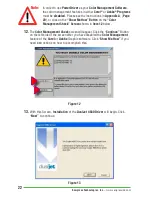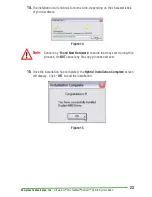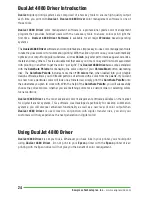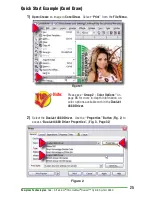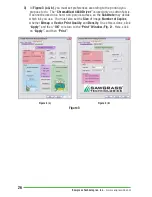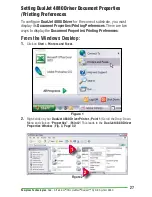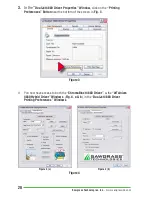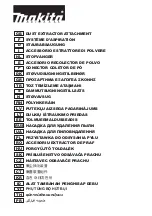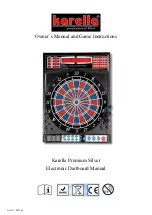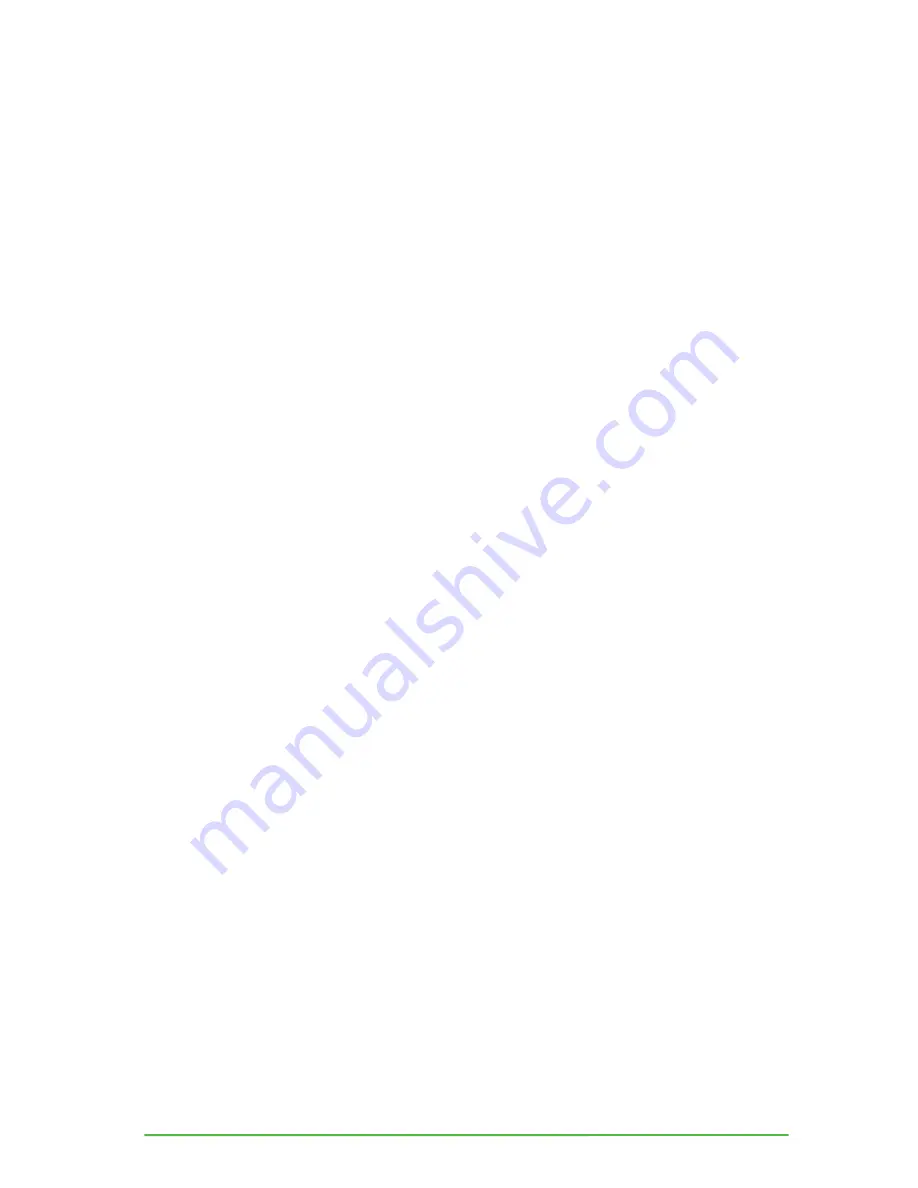
Sawgrass Technologies, Inc.
~ www.sawgrassink.com
36
Vector and Bitmap Explanation
Bitmaps consist of a grid of pixels. Bitmaps come from digital cameras, scanners,
and photo CDs. Bitmaps can also be created in applications like
Corel PhotoPaint
or
Adobe PhotoShop. Bitmaps have file extensions like
GIF, JPG, BMP,
and
TIF
. Vector
components consist of shapes, curves, lines, and text. They are created in programs
such as
CorelDraw
and
Adobe Illustrator
. Higher end programs like
CorelDraw
can
combine Vector and Bitmaps into a single image. As a rule of thumb, if the object in
your image is made of curves, text, shapes, or fills, it will be color corrected using the
ChromaBlast 4880 Driver Tab
settings. All other image types will be color corrected
based on the
ChromaBlast 4880 Driver Tab
Bitmap setting.
Bitmap & Vector Options
•
No Color Management -
All color management will be accomplished using the
Graphic Design Software
.
• Graphics -
This setting is most suitable for reproducing life-like
clipart.
• Photographic
- This setting is most suitable for reproducing skin tones
in scanned photographs.
• ColorSure Checkbox - ColorSure
is used to replace specific colors in your image
with a spot color chosen from the ColorSure palette. This resulting spot color
enhancement is not affected by color setting. A ColorSure spot color will ALWAYS
print the same.
See Appendix C for an overview of ColorSure, Page 51.
ColorSure Options
• Print Palette Button –
Prints the
ChromaBlast ColorSure
palette for the selected
substrate.
ColorSure
is a method for reproducing exact spot colors. The two
main components are:
1)
the
Transferred Palette
and 2) the
CorelDraw
,
Corel
PhotoPaint
, and
Adobe Swatches
. For a complete description on how to use
ChromaBlast ColorSure
to get perfect spot colors, see
Appendix C
.
• Custom Palette Button –
This button launches the
Custom Palette Utility
, which
enables you to add, edit, import, and export custom colors to the
ColorSure
Palette
. If you need to precisely match a specific color, the
Color Finder Tool
makes this a breeze. For a complete description on how to use the
Custom
Palette
, see
Appendix C
.
Output Options
• High Speed –
If the printer supports multiple resolutions, choose the most
appropriate setting. For soft substrates, the High Speed option works well.
• High Quality –
If the printer supports multiple resolutions, choose the most
appropriate setting. For hard substrates, choose the High Quality option.
• Mirror –
When you transfer an image, the result will be “flipped” when compared
to the printed image. In order for your transfers to come out correctly, you must
flip the image before transferring.
• Max Density -
Uncheck this box if you experience bleeding or smearing issues with
output.

